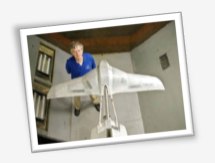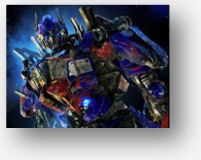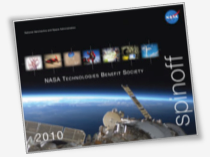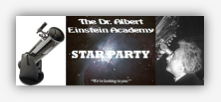
No Boundaries — Project-based Competition for Students


 NASA Explorer Schools invites K-12 students to join a live chat on Jan. 21 from 2 – 3 p.m. EST with Dr. Joel S. Levine. Dr. Levine is the Chief Scientist of the ARES Mars Airplane Mission, and will answer questions about the the development of a robotic, rocket-powered airplane that will fly through the atmosphere of Mars to search for evidence of life by looking for trace gases of biogenic origin.
NASA Explorer Schools invites K-12 students to join a live chat on Jan. 21 from 2 – 3 p.m. EST with Dr. Joel S. Levine. Dr. Levine is the Chief Scientist of the ARES Mars Airplane Mission, and will answer questions about the the development of a robotic, rocket-powered airplane that will fly through the atmosphere of Mars to search for evidence of life by looking for trace gases of biogenic origin. Join the chat at https://www.nasa.gov/offices/education/programs/national/nes2/home/live-chat-Levine.html
 Teachers, are you interested in incorporating video technologies into student learning activities? Here’s a great way to show your students examples of student-created videos that support learning.
Teachers, are you interested in incorporating video technologies into student learning activities? Here’s a great way to show your students examples of student-created videos that support learning.Now that the holidays are over, it’s time to get back to academics by taking advantage of the wealth of NASA-based classroom resources and learning opportunities that we can provide. NES will offer your students monthly chats that feature scientists, researchers and engineers.
 On Jan. 11, 2011, Google launched the inaugural Google Science Fair. Google has partnered with CERN, National Geographic, Scientific American and the LEGO Group to create this new STEM competition. This is a global competition open to any student aged 13-18, and students may enter as individuals or as teams of up to three. There is no entry fee. Registrations and submissions will be made online. The Science Fair will culminate in a celebratory event at Google headquarters in California in July 2011, where finalists will compete for internships, scholarships and prizes in front of a panel of celebrity scientist judges, including Nobel Laureates and household names.
On Jan. 11, 2011, Google launched the inaugural Google Science Fair. Google has partnered with CERN, National Geographic, Scientific American and the LEGO Group to create this new STEM competition. This is a global competition open to any student aged 13-18, and students may enter as individuals or as teams of up to three. There is no entry fee. Registrations and submissions will be made online. The Science Fair will culminate in a celebratory event at Google headquarters in California in July 2011, where finalists will compete for internships, scholarships and prizes in front of a panel of celebrity scientist judges, including Nobel Laureates and household names.
Solar energy is the primary source of power for today’s NASA missions. New solar technologies can improve space-based energy systems for human and robotic spacecraft missions. NASA solar technologies demand that deployed solar energy systems be as efficient and as lightweight as possible. Researchers at NASA are pushing the limits of solar energy efficiency and weight by creating new materials that enhance solar energy system performance. Technologies for space-based applications also provide Earth-based benefits, helping to drive down the cost of solar energy with more efficient systems.
 One of the most frequently asked questions of astronauts is about how and what they eat while in space. Expedition 26 Commander Scott Kelly recently made an informative video aboard the space station showing the food and beverage area, how food is prepared, menu options, and how they eat.
One of the most frequently asked questions of astronauts is about how and what they eat while in space. Expedition 26 Commander Scott Kelly recently made an informative video aboard the space station showing the food and beverage area, how food is prepared, menu options, and how they eat. Have you ever wondered what various geographic locations on Earth would look like from space?
Have you ever wondered what various geographic locations on Earth would look like from space?  Each year, NASA produces a publication that highlights NASA spinoff technologies. Its articles show ways NASA research and technology have impacted our world. NASA Explorer Schools teachers can use these very interesting features when presenting NES modules. Students looking for a research topic or possible project area may find one of the spinoffs to be the perfect topic.
Each year, NASA produces a publication that highlights NASA spinoff technologies. Its articles show ways NASA research and technology have impacted our world. NASA Explorer Schools teachers can use these very interesting features when presenting NES modules. Students looking for a research topic or possible project area may find one of the spinoffs to be the perfect topic.Link to the NES Virtual Campus home page.
 On the clear autumn night of Nov. 19, approximately 250 students and parents at Dr. Albert Einstein Academy, School #29, circulated among four activity stations relating to astronomy. The stations included telescope viewings of the moon, Jupiter and its moons, a virtual night sky tour in the planetarium, and two learning activity tables.
On the clear autumn night of Nov. 19, approximately 250 students and parents at Dr. Albert Einstein Academy, School #29, circulated among four activity stations relating to astronomy. The stations included telescope viewings of the moon, Jupiter and its moons, a virtual night sky tour in the planetarium, and two learning activity tables.To learn more about how NASA Explorer Schools educator Tracy Espiritu and the teachers at the academy pulled off this successful astronomy night, read the Astronomy Night at School 29 post in the Ideas for family night events post in the ~Other NASA-related Activities I’ve Done forum in NEON.